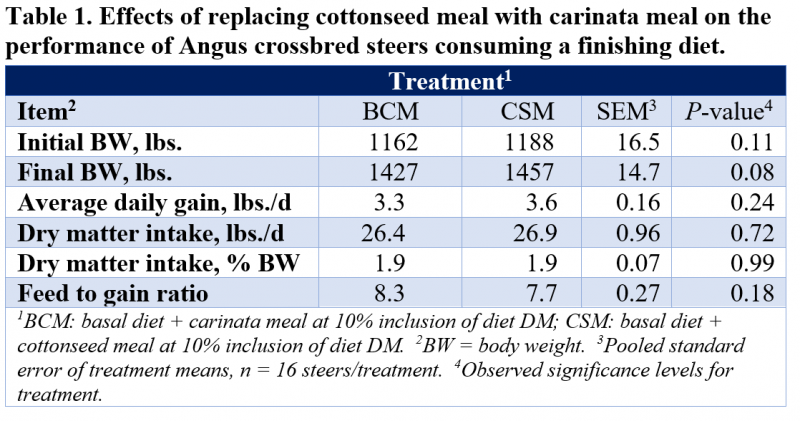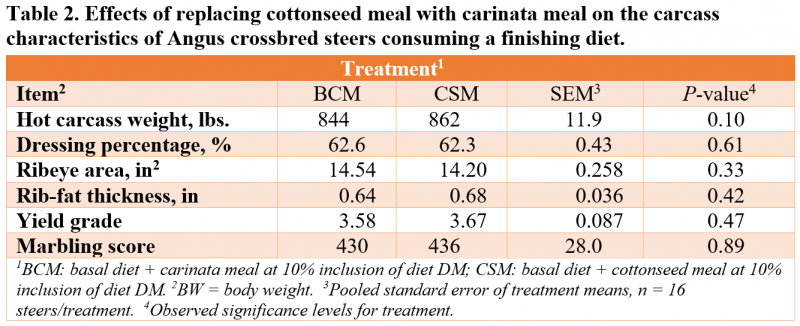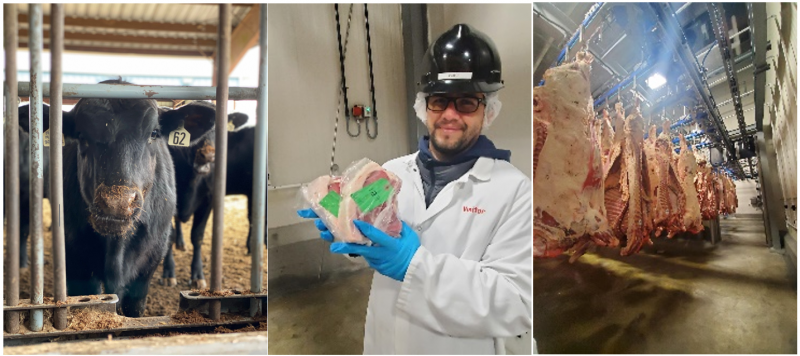
Beef steers consuming carinata meal finishing diets at NFREC and carcass data collection at a commercial meat processing facility in Florida. Photo credits: Federico Tarnonsky, Nicolas DiLorenzo, and Tessa Schulmeister, UF/IFAS
Nicolas DiLorenzo and Tessa Schulmeister, UF/IFAS North Florida Research & Education Center, Marianna
Carinata is a novel, non-food oilseed crop, gaining popularity because the oil from the seed can be extracted for use as a 100% drop-in jet biofuel. Because of this, production has recently been increased in the U.S. In the Southeastern U.S., carinata has been successfully incorporated into existing cropping systems, in both crop rotation and as a winter cover crop, due to its cold and drought tolerance and heat and disease resistance. A protein-dense meal (~40% crude protein) is obtained as a byproduct of oil extraction, which offers the potential of carinata meal to be utilized as an alternative protein source in beef cattle diets. The University of Florida has conducted research to evaluate its potential in backgrounding beef cattle diets. However, carinata meal had not previously been tested in finishing beef cattle diets to determine its impact on animal performance, meat quality, and sensory attributes.
–
Finishing study
Thirty-two Angus crossbred steers were fed a finishing diet (40% cracked corn, 35% soyhull pellets, 5% gin trash, 5% bermudagrass hay, and 5% vitamin-mineral supplement, all in dry matter basis) and supplemented with a protein source of either 10% cottonseed meal or carinata meal (16 steers in each treatment). Growth performance data were collected on the steers after 56 or 105 days on feed, to achieve similar finishing endpoints based on visual appraisal, and as a result, steers were sent to slaughter in two harvesting dates. Steers were transported approximately 250 miles to Fort McCoy Ranch, FM Meat Products, LP (Fort McCoy, FL), where carcass evaluations were performed on harvested steers. Steak samples were collected from each steer and evaluated by the University of Florida Meat Science Laboratory to determine meat sensory attributes.
–
Performance data
Steers consuming carinata meal performed similarly to steers consuming cottonseed meal (Table 1).
Carcass characteristics
Steers consuming carinata meal performed similarly to steers consuming cottonseed meal (Table 2).
Sensory Panel Scores
Steers consuming carinata meal performed similarly to steers consuming cottonseed meal (Figure 1).
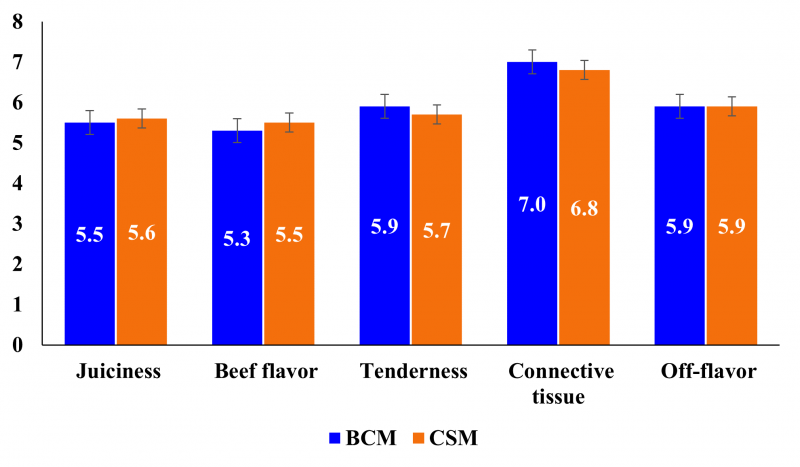
Figure 1. Effects of replacing cottonseed meal with carinata meal on meat sensory panel scores. BCM = basal diet + 10% carinata meal; CSM = basal diet + 10% cottonseed meal (DM basis).
–
USDA Quality Grade Distribution
Feeding carinata meal at 10% did not affect the distribution of USDA quality grades when compared to steers fed cottonseed meal at 10% (Figure 2).
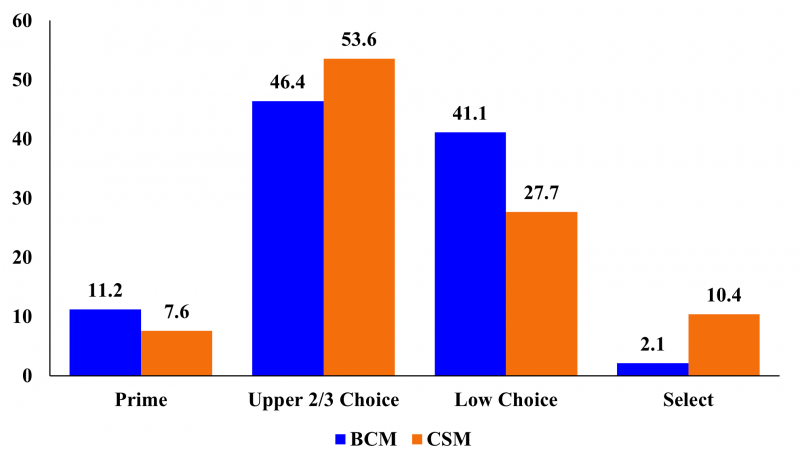
Figure 2. Effects of replacing cottonseed meal with carinata meal on the frequency distribution of USDA quality grade scores. BCM = basal diet + 10% carinata meal; CSM = basal diet + 10% cottonseed meal (DM basis).
–
Take Home Message
Steers consuming carinata meal performed similarly to steers consuming cottonseed meal in all aspects of the feedlot finishing study, demonstrating the viability of carinata meal to be used as an alternative to cottonseed meal in beef cattle diets. As the acreage of carinata planted in the U.S. increases, the availability of this protein source for beef cattle diets will also increase. Currently, crushing plants in the Midwest are processing seeds, thus carinata meal may become available in our region in the near future. The interest and demand for freezer beef is increasing in our region, and locally available high-protein feedstuffs are much needed when finishing beef cattle. If you have questions about how to use carinata meal in livestock diets, please contact Nico DiLorenzo or your UF/IFAS County Extension Agent.
- 2025 Florida Bull Test Sale Sets Average Price Record - March 7, 2025
- 2025 Florida Bull Test Sale – January 18 - January 10, 2025
- Intake Limiters:Old Technology for Modern Beef Cattle Supplementation - September 20, 2024

